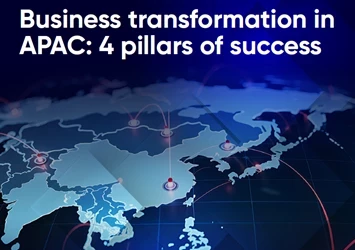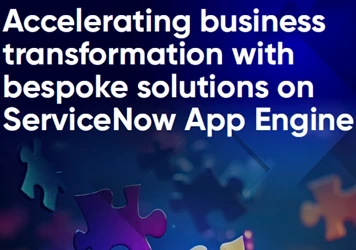Seven elements to focus on as the end of the financial year approaches (part 1)
Learn what transformation professionals need to focus on to ensure a smooth approach to the end of the financial year
Add bookmark
This is the first of a series of articles which aims to discuss how to break the vicious cycle of tactical solutions introduced by function leaders toward the end of financial year (EOFY). It discusses a strategic method to EOFY which could be managed in phases or in increments. The heart of the approach is to leverage Lean, Six Sigma and Agile methodologies to transform your business and eliminate knee-jerk reactions toward EOFY.
I have been adding value in the field of business transformation and process improvement for almost two decades and had the opportunity to influence both manufacturing and transactional industries.
It is that time of the year when function leaders perform a financial health check as EOFY is on the horizon. The reality is observed by leaders and often felt by the colleagues and there usually are significant reactions and changes after understanding the cost position.
- Business utilities needing company performance reports in the form of significant cost reductions to align with the budget
- Increasing political influence between function leaders to differentiate the utility boundaries based on cost
The enterprises that had their cost-investment-market all in alignment with proficient strategic and operational leadership will have the luxury of proceeding as planned. The leaders who make changes to achieve their cost targets ahead of EOFY will have to follow routine tactical actions to help them move the cost position from red to black with less than three months to spare.
Tactical solutions traditional function leaders follow to move the cost position from red to black
Freeze
Temporarily freeze recruitment, resources involved in non-customer outcome generating activities, external services such as consultants and transformation investments that have no in-year benefits or market impacts.
Restructure
Structure review often results in a centralization or decentralization move. Decisions made in strategic isolation to align functions to the product or service value chain with leadership shuffles to expand roles. Layers within the structure usually are added or removed.
Limits
Apply limits on overtime, travel, logistics, raw material or direct service transaction cost, technology usage and direct or indirect cost components that otherwise will operate under "business as usual". Generally speaking, this is a representation of how senior leaders perceive cost in their business.
Reprioritization
Reprioritize the value add of the transformation office on the short term to fulfil the in-year cost benefits. Leaders tend to advance the transformation delivery releases in the roadmap to harvest their benefits during the current financial year.
Transfers
Transfer cost within business units, capitalize project cost and decommission systems or equipment where necessary. Rationalization of the cost of annuity service and a transfer of effort-based costs between sales, product or operational business units to fulfill the EOFY cost position.
Redundancy
Initiate role reviews based on a pre-determined set of cost reduction rules to remove layers or roles in the current operational structure.
All the above disrupt the transformation roadmap and have potential knock-on impacts toward colleagues’ motivation, transformation costs and can ultimately lead to poor customer value.
The multimillion-dollar questions that need to be asked by transformational leaders are:
- Do you deploy these tactics annually or once in two or three years?
- What are historic trends of similar actions? Did the business return to pre-EOFY state after several months?
- What were the cost results post-tactical actions? Did they achieve the cost targets or did they transfer some of the challenges to different business units?
- Did the organization demoralize or lost its best people? Did it promote technical experts to become people leaders and loose the effectiveness of their roles?
- Did the tactical actions increase the cost of business transformation during the following financial year?
- Were the tactical actions detrimental to basic ways of working which were previously successful in the business?
Though these tactical actions serve a purpose at the EOFY, repeating the actions annually showcases a broader enterprise-wide leadership crisis. Business transformation leaders can support function leaders break this vicious cycle and establish reliability within their businesses.
How business transformation leaders can help
Lean thinking, Six Sigma problem solving and Agile delivery have tools and techniques to derive a strategic plan of action. The idea is not to execute conventional Lean Six Sigma and Agile deployments as through my experience I have learned they are extremely time-consuming and somewhat counterintuitive to today’s dynamic demands based on a volatile macroeconomy.
The objective is to eliminate chaos which is taking place during EOFY when businesses are 'trying' to look profitable and cost positive by introducing 'band-aid' fixes to business challenges.
The following illustration is aimed at establishing a business operating model by internalizing operations management, Lean, Agile and Six Sigma principles.

Source: Nao Anthony
Could this plan help function leaders achieve their budgetary targets during the current financial year? The short answer is “maybe”. As Albert Einstein said, "the important thing is not to stop questioning. Curiosity has its own reason for existing”.
We, as business transformation professionals, will ask questions to foster thought leadership among our function leaders, thereby influencing the transformation agenda toward a sustainable roadmap which is customer- or demand-sensitive and cost-effective. This can be done by focusing on seven elements: Voice of Customer, value, leadership, product- or service-based value chains, operations management and continuous improvement, transformation and cost of value delivered through value chains.
In the part two and three of this series of articles I am aiming to discuss each element of this model and how it could transform your organization, eliminating the reliance of tactical solutions toward EOFY.
What is your strategy to approach EOFY? Let us know by leaving a comment below.
















